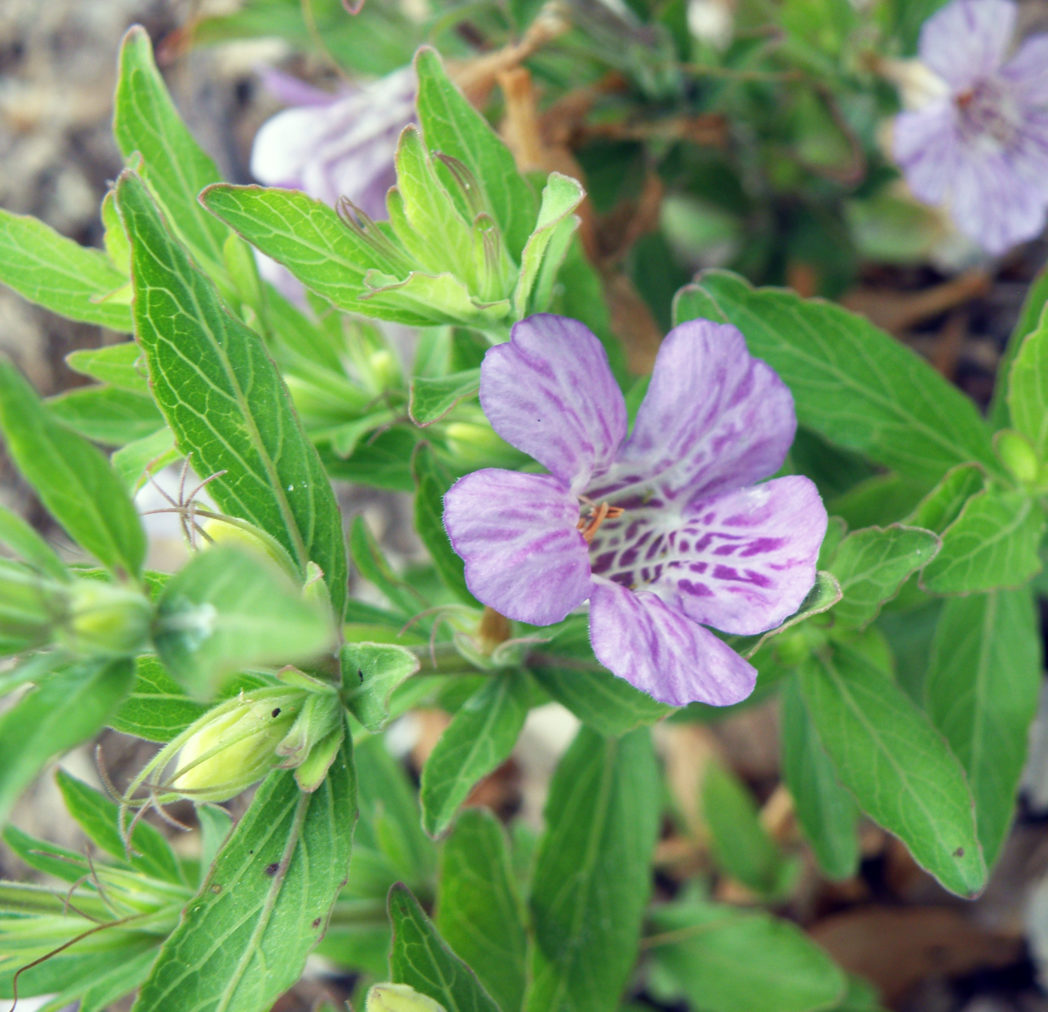Oblongleaf twinflower
Pictured above: Oblongleaf twinflower (Dyschoriste oblongifolia) by Stacey Matrazzo. Click on terms for botanical definitions. View post as a PDF.
Oblongleaf twinflower is a low-growing wildflower found in dry to moist sandhills, flatwoods and mixed upland forests in North and Central Florida. It attracts bees and butterflies, including the Malachite (Siproeta stelenes) and White peacock (Anartia jatrophae), and is a host plant for the Common buckeye (Junonia coenia). Look for small pale-green eggs laid singly on leaves. Common buckeye caterpillars eat both leaves and flowers and may be seen on the plants year-round and especially in fall.
Oblongleaf twinflower has small (1-inch) blooms that are light blue to purple and funnel-shaped, with five lobed petals. The lower petals bear dark marks or streaks that extend into the throat. Each bloom has four stamens and five lobed calyces that are pubescent and subtend the flower. Leaves are simple, oblong to linear, dark green and pubescent. They are oppositely arranged on thin stems. Fruits are capsules that, when mature, dry and split open, dispersing the seeds.
The common name “twinflower” refers to its flowers being born in pairs (“twins”) atop the stems.
Family: Acanthaceae (Acanthus family)
Native range: Central and eastern Panhandle, north and central peninsula
To see where natural populations of oblongleaf twinflower have been vouchered, visit www.florida.plantatlas.usf.edu.
Hardiness: 8A–11
Soil: Dry to moist, acidic, well-drained sandy soils
Exposure: Full sun to partial shade
Growth habit: 6–10” and sprawling
Propagation: Seed, division, cuttings
Garden tips: Oblongleaf twinflower is exceptionally adaptable to the home garden. It has an extended bloom period and will spread rapidly by underground runners and self-sown seed, making it an excellent, easy-to-care-for groundcover. Planting in partial shade will result in less dense coverage. Although drought tolerant, extended dry periods will harm the plant; it will be necessary to water occasionally. Oblongleaf twinflower is not salt tolerant, making it a poor candidate for coastal landscapes.
Oblongleaf twinflower plants are often available from nurseries that specialize in Florida native plants. Visit www.PlantRealFlorida.org to find a nursery in your area.

